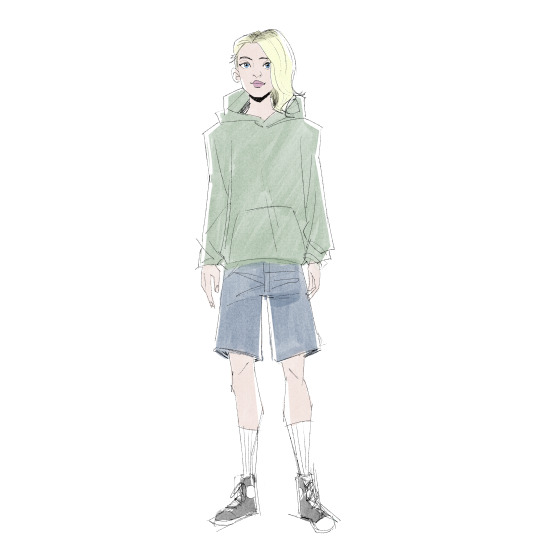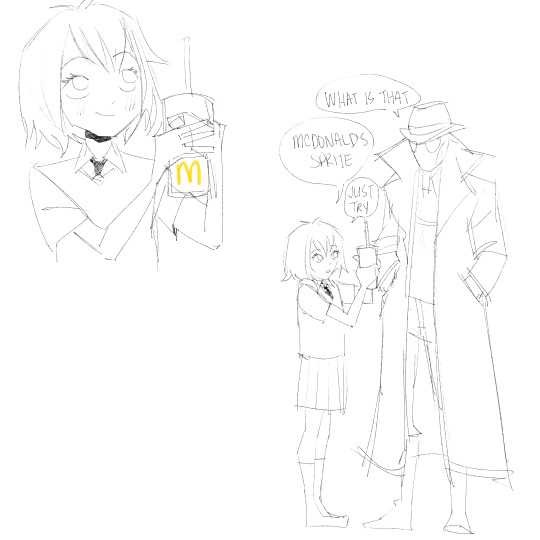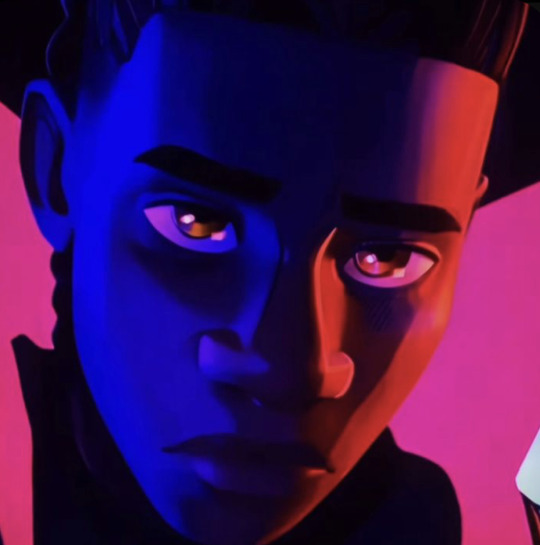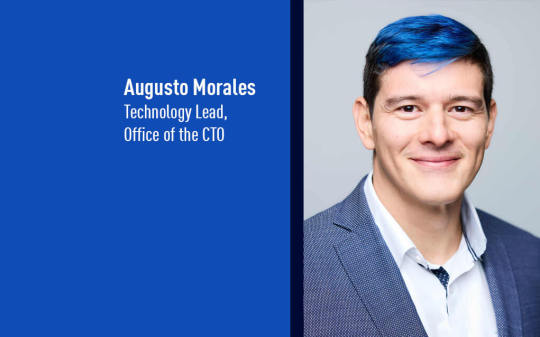#architecture and morality
Explore tagged Tumblr posts
Text

15 notes
·
View notes
Text
2 notes
·
View notes
Text
Architecture & Morality - Orchestral Manoeuvers in the Dark
A band that was inspired to use synthesizers after seeing Kraftwerk live, Orchestral Manoeuvers in the Dark is an interesting band that I quite like. OMD considered themselves to be an experimental band that ended up getting labelled as pop, and with the weird noisy intro to Maid of Orleans, the sounds of the song Architecture and Morality, and some other parts of this album I can understand that label of being experimental. This album has not one but two songs relating to Joan of Arc, a song named Joan of Arc and a song named Maid of Orleans. My favorite song is Maid of Orleans.
Apple Music:
Spotify:
#music#daily album recs#album recommendations#album recommendation#album recs#album rec#music rec#music recommendation#music recommendations#dailyalbumrecs#Joan of arc#Maid of Orleans#Omd#orchestral manoeuvres in the dark#Architecture and morality#Architecture & Morality
1 note
·
View note
Text






revisited this awesome fic (the open road & other anesthetics by tactfulgnostalgia) and could not resist their dripless outfits
#guys i misspelled studious. im sorry#im an architecture major#my art#spiderverse#atsv#across the spiderverse#spiderman across the spiderverse#peter b parker#miles morales#gwen stacy#spiderman noir#spidernoir#peni parker#fanart#smatsv
1K notes
·
View notes
Text
12:15am , E-42 Miles

Summary Miles just really needs his lover
a/n none
warnings mentions of threats, near death experience, death, trauma (?) angst w love/fluff
‘come over’
Was all the text read, sent at 12:15. Miles had a tendency of getting home late from his job, but when it was past 11, it usually meant something went wrong.
It didn’t even take a minute for you to grab your coat, throw on the hood and head out the door. You took the elevator down and took a late night cab to the place, seeing as how it was dangerous for a girl to walk the streets at night since they could, and most likely would fall victim to lots of crimes.
You tipped the driver, before stepping out infront of the building only for Mrs. Morales to open the door and let you in with a smile, but worried expression on her face.
“Hola mija..” you smiled at her softly; “Hola, ¿El está bien?” You asked, not speaking too loudly. She just shook her head; “Yo no sé mija, he just- won’t talk to me” she sounded worried as she lead you up the stairs and into their apartment.
“Talk to him, por favor Mija” she held one of your hands between both of hers, with a pleading look in her eyes. “Of course” you placed yours on top of hers squeezing before turning to go into miles’ room.
You didn’t even knock, simply opening the door and closing it behind you. The room was pitch black, the only light coming from the moon as this side of town was always dark. “Miles?” You whispered, trying your best to find his figure.
Then you heard rustling in the bed, and miles peaked his head out. “Vida mia,..¿Que paso?” You cooed, making your way to the bed and sitting next to him.
He only turned to face you, tired eyes boring into yours. “Nada..pero I just really need you right now” he mumbled, arms snaking around you and pulling you closer so that his face was now in your lap.
Your heart pounded, but ached at the sight of how exhausted he looked. You lightly tapped him making motions for him to sit up, to which he did, slowly. He gave you a questioning hm, his eyes still giving you that same look.
“I know you don’t want to talk about it, but you’re worrying us all. At least tell me something, anything” your hands on his neck and cheek, caressing him as if he’d break.
He sighed and closed his eyes; he swallowed the lump in his throat thinking about the situation earlier that night. “They..almost had me today” You could hear the pain in his voice, and the way his face twisted when he thought about it.
You wrapped your arms around him, legs now sprawled out across the bed as you pulled him in. “Oh miles..” was all you could get out, holding him so tightly. He almost died today, and it was a possibility it could happen again. “just the thought of loosing you..fuck” you squeezed him, tears threatening to spill.
His arms were now hooked under yours, holding you. “I’m sorry mamí” was all he could mumble, a tear now falling down his cheek.
“It’s not your fault miles, I’m sorry I couldn’t be there for you” you loosened your grip, rubbing circles on his back, and one hand coming up to wipe the tear from his face.
It was rare miles let you treat him like this, ever since his father passed he believed it was his job to provide and protect, take the role of “the man of the house”. He forced himself to grow up faster.
“I’m just so glad you’re okay” you mumbled, placing a kiss at the top of his braids. You both laid there staring at the night sky from his window.
Miles enjoyed the feeling of being held and comforted, being cared for. But he knows sooner or later he’d go back to the role he played, and have to tell you the truth.
the truth being how they held him at gunpoint, retrained, then threatened to kill you if he ever, stepped out of line again.
#spider verse#across the spiderverse#earth 42#miles morales prowler#animals#architecture#miles morales x reader#prowler!miles x reader#miles morales#prowler!miles
2K notes
·
View notes
Text

Vertumnus and Pomona
Artist: Follower of Adriaen van der Werff (Dutch, 1659–1722)
Date: n.d.
Medium: Oil on canvas
Collection: Private collection
Description
Adriaen van der Werff's "Vertumnus and Pomona" depicts the Roman god Vertumnus, disguised as an old woman, attempting to woo the nymph Pomona, a story from Ovid's Metamorphoses, with the artist using this scene to explore themes of seduction and moral lessons.
#mythological art#vertumnus and pomona#painting#oil on canvas#landscape#architecture#mythological scene#artwork#fine art#oil painting#trees#ovid's metamorphoses#literature#nynph pomona#seduction#moral lesson#roman god vertumnus#disguise#old woman#flowers#drapery#dutch culture#dutch art#adriaen van der werff#dutch painter#european art
15 notes
·
View notes
Text
Whitewash is extremely moral. Suppose there were a decree requiring all rooms in Paris to be given a coat of whitewash. I maintain that that would be a police task of real stature and a manifestation of high morality, the sign of a great people. -- Le Corbusier
A shocking call for compulsory whitening is made at the end of a key modernist manifesto. The pronouncement is associated with the signature whiteness of modern architecture -- an aesthetic regime that was presented as a complete revolution of the built environment in the 1920s and became the unconscious default setting of everyday life. Just look at the predominantly white background of most of the kitchens, offices, living rooms, bedrooms and bathrooms around the world [...]. Le Corbusier didn’t simply call for whitewash to be imposed by the police in the name of health. It was meant to act as a form of policing in its own right, a technology of surveillance that would put in motion an ever-expanding culture of self-policing. Whitewash exposes every dimension of life in front of it to judgement. It acts like “a court of assize in permanent session” that will “give a power of judgement to the individual,” and thereby “make each one of us a prudent judge.” [...] A “Law of Ripolin” -- the brand name of the hard impermeable and washable enamel “sanitary paint” invented at the end of the nineteenth century [...] is needed to ensure that all interiors are painted white to target any form of dirt or darkness:
Imagine the results of the Law of Ripolin. Every citizen is required to replace his hangings, his damasks, his wall-papers, his stencils, with a plain coat of white ripolin. His home is made clean. There are no more dirty, dark corners. Everything is shown as it is. Then comes inner cleanness [...]. When you are surrounded with shadows and dark corners you are at home only as far as the hazy edges of the darkness your eyes cannot penetrate. You are not master in your own house. Once you have put ripolin on your walls you will be master of yourself. [...]
---
Whiteness manufactures health, morality, and intelligence. [...] The office of a modern factory that is “clear and rectilinear and painted with white ripolin” is a place of “healthy activity” and “industrious optimism.” [...] Le Corbusier’s routinely authoritarian and often explicitly eugenic and fascist impulses, associations, and actions make him an easy target. But there are endless, quieter, ultimately more controlling and insidious celebrations of whiteness in other hands. Le Corbusier is but a tip of the vast iceberg of whiteness. [...]
The very idea of an interior is the effect of this everyday violence. Architecture is never simply complicit with authority. Authority without architecture might not even be thinkable. [...]
There is no apolitical concept of health; no natural body or brain waiting to be cared for or abandoned by medicine and architecture that is not already an effect of those biopolitical regimes.
It is through the question of sickness that architecture reshapes the human. The idea of a healthy architecture is always about the health of a small group relative to multiple others [...]. Whiteness is coded as a fragility requiring protection through continual acts of preemptive violence. Whiteness is not a thing but a defense and deployment of power over others. [...]
---
Whiteness in Le Corbusier’s The Decorative Art of Today, for example, is simultaneously the most modern thing to do, the very symptom of modernity, and the most ancient of gestures. [...] Le Corbusier’s argument was first published in a late 1923 issue of L’Esprit Nouveau [...]. It was, after all, the extended “Voyage d’Orient” of 1911 (including the Balkans and Greece, but especially Turkey) where Charles-Édouard Jeanneret, the young architect from a small mountain town in Switzerland who would a decade later rename himself “Le Corbusier,” became “besotted with white” and convinced that the future of architecture was white. Whiteness is discovered in the lands of the non-white; of those seen to be closer to deeper human history and therefore to be admired and learned from. In fact, the very point of going to the East was to encounter its “great white walls” as an antidote to the self-absorbed decadence of architecture in the North, as Jeanneret explained [...]. Jeanneret expresses nostalgia for the more intact and mesmerizing whiteness of the great mosques and vernacular houses of Constantinople (Istanbul) [...] [and] “Algiers-the-white.” [...] This pervasive sense of contamination provoked the call for a second, more explicit law to impose whiteness not only onto industrial culture, but also onto its victims: the people of color and places seen as newly “unhealthy” -- requiring, as it were, a dose of “their” own medicine. [...]
---
The “white” architecture of the 1920s drew on countless experiments in whitening buildings in the name of health. This included, precisely, the use of Ripolin that had already become standard in clinics, hospital wards, and sanatoria rooms at the turn of the century.
In 1899, for example, the Touring-Club de France, inspired by one of its [...] cyclist members who was a doctor, started a campaign for an easily disinfected “hygienic room” in hotels that would be Ripolin-lined [...]. Hotel rooms were treated as hotspots for contagion [...]. Given the largely upper-middle-class membership of the club, this anxiety about disease was also class anxiety, fear of the unclean other. The tourist was to be mobile yet isolated by a prophylactic whiteness that would itself travel in advance.
The Touring-Club exhibited such a prototype “white room” with toilette and toilet spaces designed by Gustave Rives at the 1900 Exposition Universelle in Paris -- strategically placed just inside the entrance of the Palais de l’hygiène [...]. The Touring-Club installed a series of such model chambres hygiéniques in automobile shows, congresses on tuberculosis, and international fairs. It was successful in persuading thousands of hotels to install such spaces [...].
Ripolin was used “everywhere,” for example, on the walls of the “hygienic housing” project for workers in Paris by Henri Sauvage and Charles Sarazin in 1903–1904. [...] The project was originally intended to feature a radical all-glass street façade with every window surrounded by webs of floor-to-ceiling hexagonal glass blocks [...] which would have been the most polemical housing structure possible, the most therapeutic role of glass, more extreme even than any sanatorium. The design was produced in immediate response to the new public health law of 1902 and the associated new building regulations. [...]
---
It is always about control of the threatening other of epidemic disease and control of the laboring poor, itself coded as dark, migrant, and contagious, a disease in its own right. And throughout this discourse of control, there is a seemingly “modern” disdain for disease-incubating ornament in favor of smooth white surfaces. [...] What is remarkable in the end is this trans-historical resilience of whiteness [...]. It orchestrates life and death.
---
All text above by: Mark Wigley. “Chronic Whiteness.” e-flux (Sick Architecture series). November 2020. [Bold emphasis and some paragraph breaks/contractions added by me.]
#ecology#abolition#health#imperial#colonial#landscape#modernity#temporal#indigenous#multispecies#tidalectics#archipelagic thinking#pathologization#haunted#halloween i guess idk#victorian and edwardian popular culture#racialized architecture#moral whitewash
239 notes
·
View notes
Text
Make Me Write
Rules: Send me an emoji corresponding to the WIP and I’ll write 3 sentences for each emoji and share it.
My WIPs:
❤️ - No Grave Can Hold My Body Down (Bobby/Athena amnesia fic)
🏠 - Modern Architecture (Post S2 Pete/Perry)
🧑⚖️ - Code of Conduct (Dan/Harry S4 AU, prequel to Judicial Impropriety)
⚖️ - Moral Obligations (Dan/Harry S4 finale AU)
💭 - Contributory Negligence (Judge Leon AU Fic 4)
🌹 - Untitled Degas/Paris RomCom
#my fics#my writing#anyone who sees this is welcome to do the same for their wips!#fic: no grave can hold my body down#fic: modern architecture#fic: code of conduct#fic: moral obligations#fic: contributory negligence#judge leon au#degas x paris#ask away
7 notes
·
View notes
Video
youtube
O.M.D, “Joan Of Arc”, album “Architecture & Morality”, 1981. "Joan of Arc" is a 1981 song by English electronic band Orchestral Manoeuvres in the Dark (OMD), released as the second single from their third studio album Architecture & Morality.
#O.M.D#orchestral manoeuvres in the dark#joan of arc#architecture & morality#1981#english band#pop#synth-pop#electronic#music
6 notes
·
View notes
Text
I recently finished reading Shirley Jackson's The Haunting of Hill House and was struck by a bunch of resonances between elements of that story and parts of C. S. Lewis's That Hideous Strength. I'm blogging about some of those resonances here. (Yes, only some. There's more. Also Hill House is a gold mine all by itself. I'mma have blogs for days.)
Click the link above to read on!
#shirley jackson#the haunting of hill house#cs lewis#that hideous strength#architecture#art#morality#christianity#horror#wordpress
7 notes
·
View notes
Text

20 notes
·
View notes
Link
#BillSienkiewicz#BrianAzzarello#ChrisClaremont#ChristopherYost#CliffChiang#ComicReview#CraigKyle#Doctor13:Architecture&Morality#GraphicNovels#JimCheung#JohnFrancisMoore#MikeChoi#NewMutants#NewMutants(Comic)#NewMutants:DemonBear#StanSakai#UsagiYojimbo#UsagiYojimbo(Fantagraphic)#X-Force#X-Force(Comic)
0 notes
Text
sometimes i'm like i think i'm gonna become a nun their lifestyle really resonate with me and then i remember the like. believing in god part. and i'm like aw shucks :(
#like fr what i wouldn't give to be a nun#except for maybe my morals and my extreme hatred towards the roman catholic church and all the harm it has propagated throughout its history#but like#i looove the little outfits#and i do love churches. aesthetically speaking.#like i love the architecture and the history of religious art and stuff#sometimes i think i could probably fake it bc i kinda did my whole life being brought up on a very very christian family and stuff#so like i'd know how to act in order to enjoy the perks ykwim
0 notes
Text
why has everyone just decided to disregard everything that makes percy interesting?
we are always begging for a main character who is given a life outside of being a main character and then we were given percy jackson, a demigod in the summer, saving the world and looking good doing it, but is also just a kid.
he skateboards and collects them, he listens to punk rock and alternative rock (are they the same thing or is punk rock a sub-genre?) but doesn't dress 'alt' (like thalia) and has anger issues and has been kicked out of multiple schools for said anger issues, some of them being (court-ordered) military schools.
he also has problems with authorities who abuse their power (gabe, the gods, the nypd etc.) and will not hesitate to call you out on your bullshit no matter how powerful and important and feared you are.
but he has morals and doesn't do things without reason. he has a level of maturity and integrity that isn't even present in most adults. he is really smart and gets better grades than annabeth, and is the most considerate person you will ever meet. he is humble and never tries to be the center of attention.
he's not the most optimistic person in the entire world, but he tries to find reasons to be happy in really crappy situations (when they were traversing Tartarus and he was so happy that annabeth was with him that he started smiling).
he is always grateful for everything he has and tries to show genuine interest in all the things that interest his loved ones, even if they bore him to death (like annabeth with her architecture).
and we completely erase that for some reason to make him nothing but 'annabeth chases' boyfriend,' and, well he is her boyfriend, and he's very proud of that fact, but he is his own person as well.
people get really mad when we erase all of annabeth's character to make her nothing more than percy jacksons' girlfriend but we do it to percy all the time.
#in this essay i will#percy jackson appreciation#skater!percy#percy jackson#percabeth#annabeth chase#percy jackon and the olympians#percy and annabeth#pjo fandom#i love annabeth chase#pjo tv show#heroes of olympus#i love percy jackson#punk rock#alternative rock#alt rock#green day#Metallica#smart percy jackson
2K notes
·
View notes
Text
fascinating parts from this brennan interview about downfall
downfall was recorded in one week and brennan described it as "one of the most intense roleplaying experiences [he's] ever had"
if avalir was showcasing the age of arcanum, downfall will showcase the actual calamity
even though avalir and aeor seem similar on paper, brennan says the stories could NOT be more different. the themes, player motivations/briefings, and genres are completely unique
downfall embraces the nuance and complexity (moral and otherwise) of the gods and digs into the idea that the gods "called a truce" to fell aeor and what that actually means
brennan says aeor actually has a large population of refugees from the calamity by the time downfall takes place. however, they didnt have a large impact on the city's architecture and so by the modern era their cultures and presence in aeor (and wider exandria) have been almost entirely lost
overall downfall seems to focus on the ways that small errors in history can change a lot
brennan describes his experience with dm'ing in exandria as "going into a sandbox and creating the toys you're gonna to play with there"
the population of aeor is "demographically meaningfully different from who was living in aeor at the height of the age of arcanum," according to brennan. basically, not every aeorian will have bolo's accent (sad)
aeormatons will be in downfall in some way
setting, plot, and character backstories were worked on in tandem
on a scale of 1 to 10 in terms of tragedy, brennan said downfall would need an entirely new axis. there is a "different kind of horror" in downfall, something that is distinct from "xenomorph chasing you horror"
brennan said "there are moments in downfall where i could feel my stomach wanting to drop out of my body"
#SCREAAAAMMM#aeor being a refugee stronghold is actually horrifying. the last bastion of the mortals and the gods just. destroyed. it. fuckedd upp...#critical role#downfall#ramblings#critical role downfall#aeor#brennan lee mulligan
4K notes
·
View notes
Text
The convergence of ZTNA, mobile devices & identity management
New Post has been published on https://thedigitalinsider.com/the-convergence-of-ztna-mobile-devices-identity-management/
The convergence of ZTNA, mobile devices & identity management


Augusto Morales is a Technology Lead (Threat Solutions) at Check Point Software Technologies. He is based in Dallas, Texas, and has been working in cyber security since 2006. He got his PhD/Msc in Telematics System Engineering from the Technical University of Madrid, Spain and he is also Senior Member of the IEEE. Author of more than 15 research papers focused on mobile services. He holds professional certifications such as CISSP, CCSP and others.
In our increasingly interconnected digital domain, the convergence of Zero Trust Network Architecture (ZTNA), mobile devices and identity management has emerged as a critical focal point within cyber security. At-a-glance, these three elements may seem unrelated, but the rising prevalence of mobile devices as key tools for user and system authentication, often through multi-factor authentication, has blurred the lines between them.
In this interview with expert Augusto Morales, we delve into the security challenges and opportunities arising from this convergence. Don’t miss this!
1. How does the convergence of ZTNA, mobile devices and identity management impact the overall security posture of an organization?
At first glance, these three components—ZTNA, mobile devices, and identity management—seem to belong to different areas of cyber security. However, due to the increasing use of mobile devices as conduits to identify users and systems through methods like MFA, the lack of visibility between the interactions increases the attack surface for organizations.
For example, in a hypothetical scenario, a mobile device gets compromised because of a malicious application or an event, like smishing. Device compromise poses a risk to users’ identities. The core concept of ZTNA proposes that organizations should actively monitor deviations from baseline policies during sessions. In other words, if a mobile threat detection system exists, it should enforce controls to prevent these attacks. The current challenge has to do with the exploitation of Multi-Factor Authentication (MFA) mechanisms by malicious actors.
Another common example is seen among organizations that, in providing MFA, allow users to accept a push notification to confirm their identities. Cyber criminals take advantage of this by sending numerous MFA requests, a practice known as MFA bombing, to end-users until users accept and unintentionally authenticate the criminals.
MFA bombing, a.k.a. MFA fatigue, also presents other challenges. Some concepts within ZTNA address the situation, such as by inspecting behavioral and environmental attributes like geo-location. However, problems can arise when the human element is involved, and implementing ZTNA is not always possible due to privacy, technical, and regulatory constraints, such as BYOD, the impossibility of applying TLS inspection, and GDPR.
The paragraphs above describe examples of convergence and the challenges involved in achieving ZTNA. There are also initiatives aimed at reducing the cyber attack surface in these convergences. As a result, this topic will become something that organizations should address at the architectural level.
2. What are the implications of Bring Your Own Device (BYOD) policies in the context of ZTNA and identities for governments?
The popularity of BYOD is increasing; however, there is a limited ability to implement security controls and achieve ZTNA with a tolerance and risk level that’s acceptable for most companies. This challenge spans private and public organizations, as well as governments.
For instance, governments are accelerating the use of digital identities, particularly in the European Union. The basic idea is to use our mobile phones to prove who we are instead of relying on physical cards. This means that cyber criminals might start targeting mobile devices more often, as they are now crucial for verifying identities in government and private activities.
Imagine if cyber criminals were to steal a digital driver’s license; they could use it to impersonate individuals and carry out malicious actions, like taking out legitimate loans or even boarding planes.
Hackers could also steal identities to mislead authorities during cyber crime investigations. The same applies to data tampering. This situation could pose a very risky scenario for users, resembling what has been seen in financial institutions, where despite 40 years of research, industry consortiums, and billions of dollars invested, cloned cards, ATM hijackings, and recent abuses of AI to harvest financial data still persist.
The problem is that BYOD implementations haven’t received as much attention as they should have in terms of access control. Protecting private phones is complicated because organizations need to find a balance between keeping user information private and ensuring the protection of company data and identities. The entire industry is still figuring out whether it should prioritize security over convenience.
Based on our experience in many customer engagements, we have noticed difficulties in implementing cyber security concepts in the mobile world. For example, security controls like encrypted data-in-motion inspection pose problems, as certificate pinning is now widely implemented in applications. Therefore, it is imperative to understand how the mobile ecosystem works and how to implement reference architectures and guidelines provided by NIST.
Another related challenge is associated with the world of mobile software. It is essential to understand how and when to apply ZTNA principles to mobile software and its execution in non-trusted environments, such as the mobile OS itself or the network.
3. In the context of identity management, what are the best practices for ensuring strong authentication and authorization controls for mobile users accessing corporate resources under a zero trust model?
The recommendations that we consistently convey to our customers are closely tied to their business use cases and how to provide both protection and convenience. It is also crucial to assess the maturity, comprehension, and applicability of ZTNA and, lastly, the applicable mobile strategy (e.g., BYOD, CYOD, and COPE). Nevertheless, we can outline some generic best practices below:
A) Implement MFA company-wide for users and systems. This applies to all forms of Private Access, VPN, or SaaS applications.
B) Implement number or code matching.
C) Protect the enrollment process and use physical means to verify the legitimacy of the parties involved. For instance, a combination of voice, location, physical presence, and specific out-of-band knowledge can be utilized.
D) When possible, apply Mobile Threat Defense, or include self-protection features in applications that manage or interact with sensitive data at-rest and data in-motion.
E) Review default configurations and adapt them to meet the required identity governance policies. In the case of mobile phones, posture management helps continuously validate changes in software, such as CVEs and unsecured settings.
F) Identify anomalies in authorization and access control, particularly for SaaS applications.
4. How can organization balance user convenience and cyber security when implementing multi-factor authentication (MFA) for mobile users in a Zero Trust environment?
There are technical methods to protect mobile devices as the primary MFA mechanism. In some cases, maintaining this balance can be achieved through a thorough assessment of the attack surface. For instance, many companies use SMS as an MFA mechanism. In such cases, a Mobile Threat Defense solution like Harmony Mobile can inspect SMS messages and proactively identify potential malicious links. In other cases, it can notify cyber security staff if vulnerable applications are installed, enabling proactive conditional access enforcement.
To strike a balance between convenience and security while protecting MFA on mobile phones, we recommend three approaches:
Implement a Mobile Threat Defense (MTD) solution, such as Harmony Mobile. This control helps thwart attacks targeting MFA, even new techniques like “quishing” It monitors the network for potential Man-in-the-Middle attacks and deviations in the quality of the mobile OS that could compromise the integrity of the MFA workflow, such as with rooted or jailbroken phones. Additionally, MTD can identify malicious campaigns targeting high-profile individuals, which is particularly relevant in today’s environment where criminals employ AI-driven “vishing” attacks.
Utilize Mobile Application Management (MAM), where applications are managed via Mobile Device Management (MDM), and posture checks are continuously conducted by a Mobile Threat Defense (MTD) solution. In cases of violations, especially in BYOD scenarios, MTD can alert risky states to managed applications. As a result, these apps can cease providing access to MFA mechanisms like push notifications and password-less methods. A common example is the use of Microsoft Authenticator for MFA, known for its convenience. The MTD can block access to the service’s IP addresses and domains if continuous validation is necessary and a violation is detected. This aligns with one of the key tenets of ZTNA.
Incorporate a secure engine within the app providing the MFA mechanism. This is especially suitable for BYOD environments. Harmony App Protect is an example of this control. In this mode, the MFA independently monitors the network conditions and the mobile OS. It halts any authentication process in case of violations. This approach offers benefits in terms of privacy and user convenience as it doesn’t require additional software. The ZTNA policy decision point (PEP) and policy enforcement points (PEP) run locally on the phone based on pre-established policies to control the MFA workflow. However, a potential drawback of this method is its inflexibility regarding policy changes, such as IoC/IoA updates or containment policies, which may necessitate a new application update. Additionally, it could impact incident management plans and business continuity, requiring user interaction.
5. What are the potential risks and benefits of integrating mobile device biometrics (e.g., fingerprint or facial recognition) as part of the identity verification process within a ZTNA strategy?
The entire mobile ecosystem and society have demonstrated that biometrics are the de facto method for identity verification. When available, biometrics offer distinct advantages over traditional validation methods. However, it’s essential to understand that the triad of authentication factors – something you are, something you know, and something you have – should always be combined. Relying solely on biometrics can create a false sense of security. Studies, such as this one and this one, have shown that even real-time attacks on biometrics are possible. Therefore, it is crucial to consistently apply a defense-in-depth approach.
The ZTNA strategy can depend on continuous diagnostics and mitigation, as well as threat intelligence feeds to assess the likelihood of a mobile attack. Both Android and iOS have implemented hardware mechanisms to protect the Secure Enclave and biometric data from tampering and exfiltration. In the case of Android, due to OS fragmentation, addressing vulnerabilities at the hardware level is more challenging, which increases overall risk. There have been instances where vulnerabilities in system-on-chip components were exploited, raising the risk of privilege escalation. Such situations could compromise the identity verification process.
6. Is there anything else that you would like to share with the CyberTalk.org audience?
The industry and security practitioners should collaborate to address the security perception offered by certain actors. There is no single silver bullet provided by a “mobile ZTNA product” that can solve identity management. A ZTNA strategy will always depend on how well mobile data flows are understood and how much visibility is maintained over the entire mobile ecosystem, which grows in complexity each day. This ecosystem encompasses applications, APIs, backends, mobile OS, and, of course, the human element. It may seem overwhelming, but a good starting point is to apply proven mobile security practices to common use cases.
#access management#ai#android#APIs#app#applications#approach#apps#architecture#Augusto Morales#authentication#biometric#biometrics#Business#business continuity#BYOD#Certifications#challenge#Check Point#Check Point Software#CISSP#code#collaborate#Companies#comprehension#course#crime#cyber#cyber attack#cyber crime
0 notes